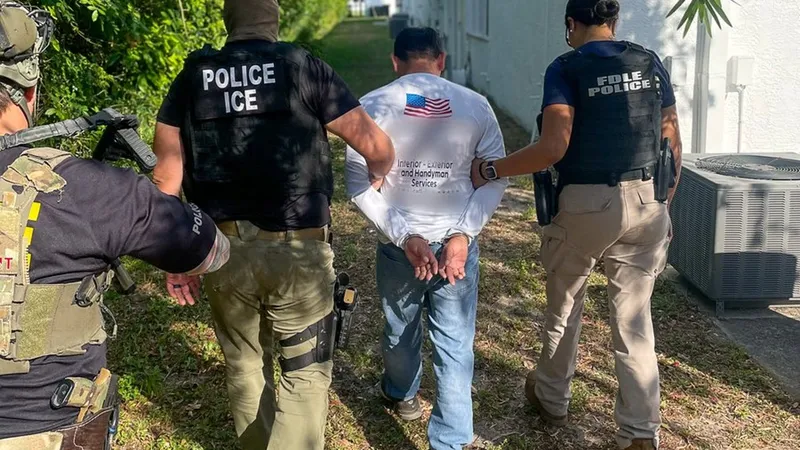MIAMI — The streets of Florida just got swept by a storm called Operation Tidal Wave, a four-day blitz that saw Immigration and Customs Enforcement (ICE) team up with state and local law enforcement to round up nearly 800 immigrants across the Sunshine State. This wasn’t your average patrol. Billed as a “first-of-its-kind” partnership, the operation, which wrapped up on April 25, 2025, marked a new chapter in how federal and state forces tackle immigration enforcement.
The numbers are staggering. In just 96 hours, ICE’s Miami field office, alongside Florida’s sheriffs and police, detained 798 people they say were in the country illegally. The operation spanned multiple counties, with agents and officers fanning out to target individuals flagged for deportation. Some were picked up at homes, others at workplaces or public spots, though the exact playbook remains tightly guarded. What’s clear is the scale: this was a coordinated, multi-agency effort, lean and mean, designed to maximize arrests in minimum time.
The operation leaned heavily on Florida’s law enforcement muscle. State police, county sheriffs, and city cops worked hand-in-glove with ICE, sharing intel, manpower, and resources. This kind of collaboration isn’t entirely new—ICE has long partnered with locals under 287(g) agreements, which let deputized officers act as immigration enforcers. But Tidal Wave took it to another level, with a synchronized sweep that hit hard and fast across the state. The result? A haul of detainees that ICE says included people with criminal records, though no breakdown of charges or nationalities was released by April 28.
The feds aren’t shy about touting the operation’s success. Official statements from ICE’s Miami office called it a groundbreaking model for future crackdowns, hinting at more to come. Florida’s top brass echoed the sentiment, framing the arrests as a win for public safety and border security. The state’s role was critical—Florida provided logistical support, from vehicles to holding facilities, making the operation a true team effort.
Not much is public about the detainees themselves. ICE confirmed the arrests targeted “removable aliens,” a broad term covering anyone from visa overstays to those with deportation orders. Some had prior run-ins with the law, but specifics—like how many were violent offenders versus minor violators—weren’t disclosed. The agency also stayed mum on where the detainees are being held or what’s next for them, though standard protocol points to processing at ICE detention centers, followed by hearings or deportation.
Operation Tidal Wave comes at a time when immigration remains a lightning rod in Florida. The state has pushed hardline policies in recent years, from laws cracking down on undocumented workers to battles over sanctuary cities. This operation, with its in-your-face name and massive arrest tally, fits that mold. It’s a signal that Florida, with ICE’s backing, is doubling down on enforcement in a way that’s impossible to ignore.
By the numbers, the operation was a juggernaut: 798 arrests, four days, multiple agencies, one state. Whether it’s a one-off or the start of a new era in immigration enforcement, Tidal Wave has left its mark. For now, the detainees await their fate, while Florida’s streets—and its politics—feel the aftershocks.

